
Rust vs C++: Successor or Pretender? Honest Opinion of our CTO
As systems grow more complex and reliability becomes mission-critical, developers face an old but still unsolved dilemma: should you build […]

I’m not going to lie, a lot of the projects we do at Somco Software are related to the medical device industry. We have developed software from small medical measurement devices to advanced surgery planning applications – so both SaMD and SiMD. If you’re curious about the difference between the two, check out our article: Software in a Medical Device (SiMD) vs Software as a Medical Device (SaMD)
But beyond our own experience, there’s a bigger picture: with regulatory scrutiny rising and digital transformation reshaping healthcare, prototyping medical devices — especially software-driven ones — is more critical than ever. From mitigating risk early to ensuring regulatory readiness, effective prototyping directly impacts time-to-market, compliance, and patient safety.
In each of our projects, medical device prototyping has played a crucial role. And that’s exactly what I want to talk about today — why prototyping matters, and what role software plays in making it successful.
If you have more questions, check out our Medical Device Software Development section or schedule a call with us.
Let’s start with the most important things and terms related to medical device prototyping. this will be our knowledge base for further discussion about medical prototypes.
Prototyping is not a linear process – it’s typically done across multiple stages, each with specific goals:

So let’s start prototyping!
A medical device encompasses a range of tools, from simple physical instruments to complex software applications, designed to aid in the diagnosis, treatment, prevention, and monitoring of diseases and medical conditions. Their primary purpose is to improve patient care through precision, efficiency, and safety.
When looking at the software side, a medical device can be any software or digital platform for medical purposes, such as diagnostic algorithms, health monitoring apps or software controlling medical equipment.
Of course these are just examples, as new and new medical devices are emerging as technology advances! But beyond software, medical devices often consist of complex hardware systems that include mechanical housings, electronic components and user interfaces. So prototyping involves a combination of disciplines: mechanical engineering, electronics and embedded systems development — not just software alone.
As discussed earlier, prototyping progresses through well-defined stages, each with a specific focus — from feasibility to clinical readiness. Knowing which phase you’re in helps guide technical and regulatory decisions.
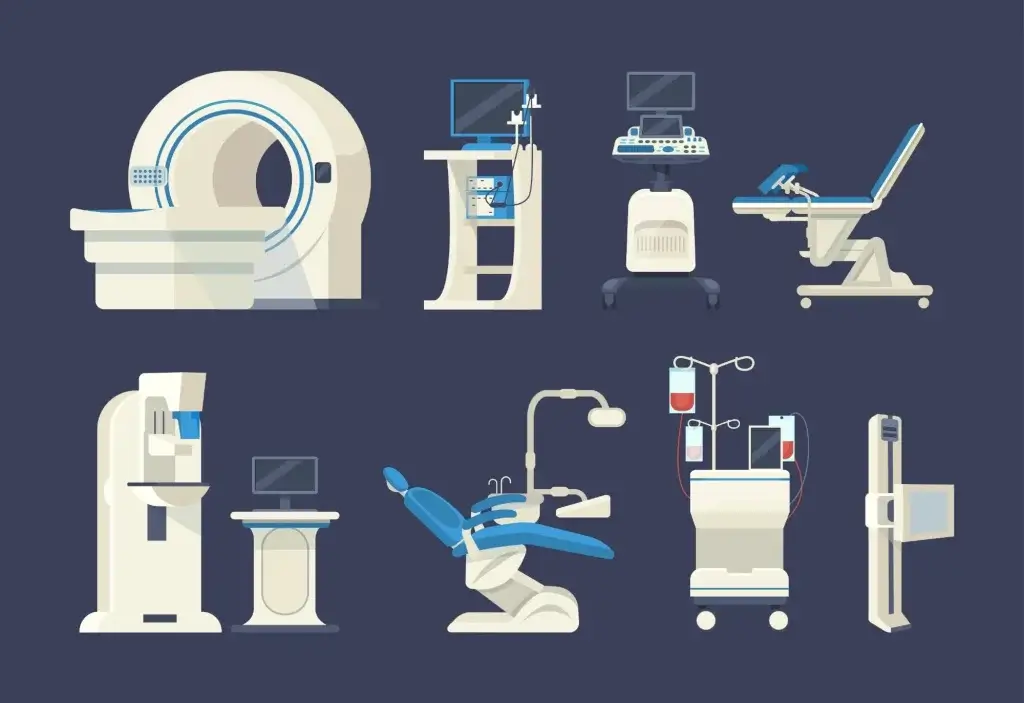 Examples of medical devices: https://www.news-medical.net/health/The-Importance-of-Regulating-Medical-Devices.aspx
Examples of medical devices: https://www.news-medical.net/health/The-Importance-of-Regulating-Medical-Devices.aspx
Medical prototyping plays a crucial role in the development and success of medical technologies. Its importance is multifaceted, impacting not only the technical development but also the regulatory, user-centric and economic aspects of medical device innovation. Here’s a deeper look into the key areas.
Prototyping enables rapid testing and refinement of concepts, allowing developers to explore a wide range of medical device design options and functionalities. By creating a physical model of the medical device, engineers and designers can identify and address potential issues early in the development process, such as usability challenges, ergonomic factors or technical limitations. This iterative process is critical in aligning the medical prototype design with actual clinical needs and user expectations, so the final product is both effective and user-friendly.
Moreover, physical prototypes also help teams evaluate component placement, material selection and manufacturability of mechanical parts, often using CAD tools, 3D printing or CNC machining techniques for quick iteration.
At this point human-centered design (HCD) becomes crucial. Designing around the real-world needs of doctors, nurses and patients from the beginning helps create a product that fits seamlessly into clinical workflows, reduces friction and increases adoption.
Prototyping provides essential design confirmation, so the theoretical design translates into a viable product. It validates the choice of materials, the manufacturing process and compliance with regulatory standards. This stage is key for stakeholder engagement, intellectual property protection and paving the way for production and market introduction. Electronics also comes into play – validating circuit designs, PCB layouts and power safety constraints in real-world conditions before full-scale manufacturing.
Prototyping in medical device development is key for testing, a chance to see how a device performs in real-world conditions. This stage helps to identify and fix technical issues, ensure the device meets its intended function and verify the device’s safety in real-world conditions.
It’s a critical step for optimal performance and patient safety!
Also early stage risk management per ISO 14971 can already be initiated here. Identifying and evaluating potential hazards – both in hardware and software – ensures that mitigation strategies are considered long before market launch.
Prototyping also plays a big role in improving a medical device’s usability by getting feedback from users, healthcare professionals and patients. This input is invaluable to identify usability issues and make iterative design improvements. The process ensures the final product is not only functional but also user-friendly, meets the specific needs of its users and increases adoption rates.
For example, low-fidelity prototype testing or simulated clinical environment testing can give early insights into interface ergonomics and physical handling of the device.
Structured usability testing per IEC 62366 can significantly enhance device design, providing quantifiable data for regulatory submissions.
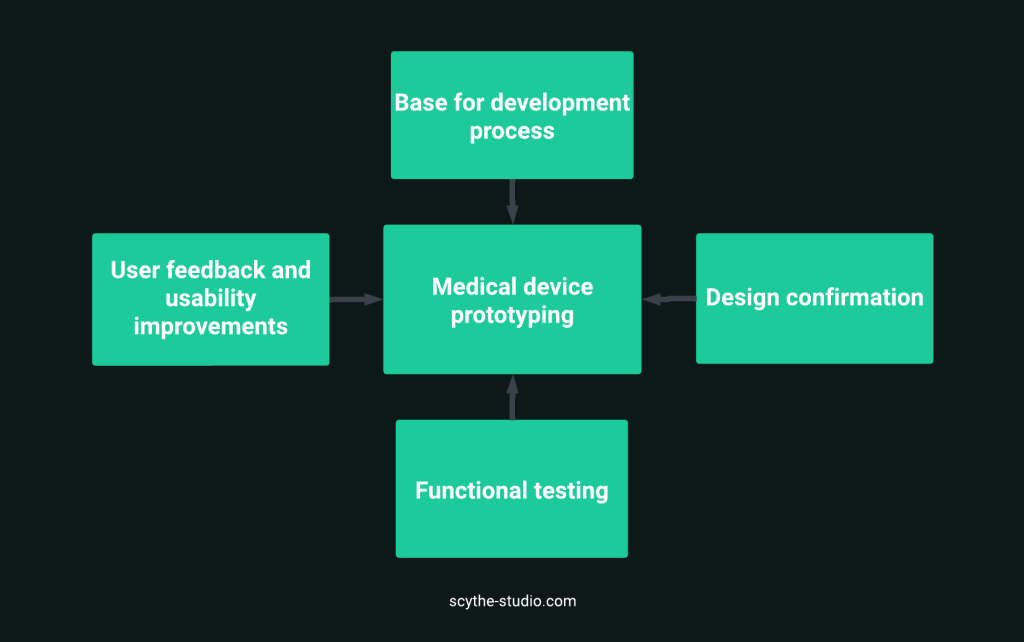 Advantages of medical device prototyping
Advantages of medical device prototyping
Prototyping Medical Devices is a complex process that combines software development with hardware engineering. This guide outlines the path to creating prototypes that are not only technically advanced but also ready for the medical industry.
Of course the process may vary from project to project but the steps below are, shall we say, universal.
The first step in any device’s lifecycle is the birth of an idea. This stage involves brainstorming, identifying healthcare challenges and conceptualizing solutions that can be developed into a functional device.
At this stage we define functional and non-functional requirements or create diagrams to help us organize our ideas.
Clearly defining the product’s purpose and requirements sets the foundation for an efficient design process.
Before we get into design and development, we need to understand the regulatory landscape. Researching standards early ensures that both software and hardware components align with regulatory compliance requirements from the start and international safety protocols.
In the medical industry this is a very important step because many of these devices if poorly designed and not compliant can harm! So we need to make sure our product will pass clinical trials.
In this context, aligning the development process with ISO 13485 – the international quality management standard for medical devices – helps ensure that all design and prototyping activities meet global regulatory expectations. It also provides a structured framework for documentation, traceability, and risk management right from the early stages of development.
Assessing the project’s viability from technical and economical perspective is next. We need to make sure we can meet manufacturing capabilities. This step confirms the project scope and sets realistic expectations for the integration of software with hardware elements also helps to reveal design flaws early before full engineering effort is invested.
Importantly it’s a key opportunity to identify risks that may affect development, safety or certification. Here a realistic approach is very important. It’s very easy to get caught up in the spiral of “Oh such a feature is useful too!” 😅
It’s also a good moment to start drafting a preliminary risk management plan, mapping potential hazards and applicable mitigations per ISO 14971.
Here we focus on developing the software backbone of the medical concept prototype (or proof of concept prototype). Designing robust, secure and scalable software architecture is crucial. This includes defining software development plans and documentation practices per IEC 62304 which governs the entire software lifecycle for medical devices — from initial design to maintenance. Prototyping then allows multiple iterations of development, to enhance functionality, user interface and overall reliability.
Coordination with mechanical and electrical teams to ensure integration with sensors, actuators, displays etc.
For more information on how to choose the right technology stack visit our post: How to Choose the Right Technology for Healthcare Software Development.
While we are software people, hardware integration is a must. This phase involves designing and testing the electronic and mechanical components that will interact with our software, to ensure a seamless operation of the final device. If we are talking about hardware, cnc machining and 3d printing have been very helpful in this phase recently 🤖.
On the electronics side this phase includes PCB design, prototyping with development boards, integrating power sources and shielding for electromagnetic compatibility (EMC).Rapid prototyping technologies allow quick iteration of enclosures and mechanical components. Here are the most common:
These methods support rapid production of enclosures and functional mechanical parts for quick testing and iteration.
Testing is multi-faceted, software simulations and hardware in real-world scenarios. For a deeper dive into software-specific validation take a look at our post: Medical Device Software Testing. This rigorous validation testing ensures the prototype meets all functional and regulatory requirements.
Testing should be done with due diligence, regularly, and with proper documentation. Following ISO 13485 guidelines at this stage helps ensure that all testing, design changes and risk evaluations are traceable and compliant – making the prototyping process an integral part of your regulatory and quality strategy, not just an experimental phase.
Depending on device classification, safety standards like ISO 14971 (risk management) or IEC 60601 (electrical safety) may already need to be addressed at the prototyping stage.
All test results should be documented. This documentation will be the basis for the Design History File (DHF) and other regulatory artifacts for CE or FDA submission.
Types of Medical Prototype Tests:
| Test Type | Purpose | Standards |
|---|---|---|
| Functional Testing | Ensures the device performs as intended in clinical scenarios. | IEC 62304 (for software) |
| Usability Testing | Assesses ease of use and workflow integration. | IEC 62366 |
| Electrical Safety | Verifies safe operation and patient protection. | IEC 60601 |
| Risk Management Review | Identifies and mitigates safety risks. | ISO 14971 |
| Quality Management Alignment | Ensures documentation, traceability, and design control practices are in place during prototyping. | ISO 13485 |
Getting feedback from end-users is invaluable. It provides insights into the device’s usability and effectiveness, to guide multiple prototype iterations to refine both software and hardware of the final prototype. Thanks to patient outcomes we can polish our product! These user sessions provide valuable insights that are hard to get through technical testing alone.
This includes formal usability validation studies — not only interviews or surveys but structured testing scenarios with quantifiable outcomes to guide design.
To get meaningful user insights apply these best practices when testing prototypes:
The culmination of this process is a polished prototype, optimized for performance, user experience, and compliance with all necessary standards, ready for the steps toward regulatory approval and mass production. Final products can be called beta stage prototypes.
In many cases, this prototype is used for early clinical validation or pilot studies to verify that the device performs well in real-world conditions and gathers data for regulatory submission.
A small-scale pilot production batch — built using near-final materials and processes — can also serve to validate medical manufacturing steps before full commercialization. Additionally, it may support limited soft launches, helping to verify market readiness before a wider rollout.
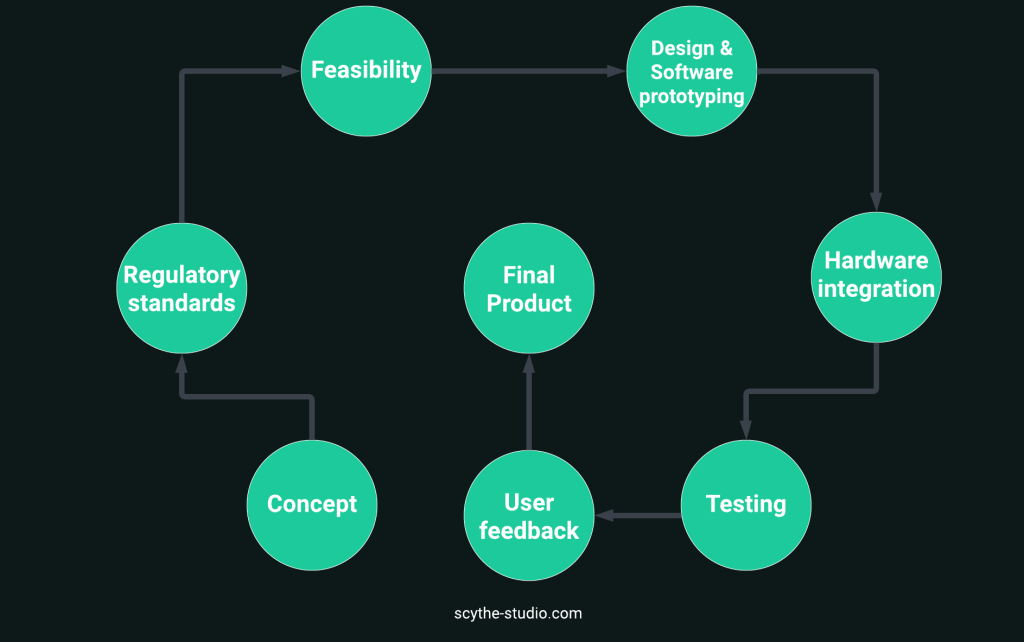 Whole process of medical prototype creation
Whole process of medical prototype creation
Creating a medical device is a nuanced journey that demands expertise in both software development and hardware engineering. By intertwining these disciplines from the outset and incorporating rigorous testing and feedback, we pave the way for groundbreaking medical devices that are poised to transform the medical field.
Prototyping is not a one time event but an ongoing iterative process that reduces risk and increases confidence at each step – resulting in a safer, more effective and user friendly medical product.
It’s also the most strategic way to ensure regulatory readiness, development efficiency, and commercial success. If you’re looking to bring a medical innovation to life, don’t overlook the power of a well-planned, cross-disciplinary prototyping process. Investing in prototyping early helps reduce development time by catching costly issues before they escalate – allowing you to market faster and safer.
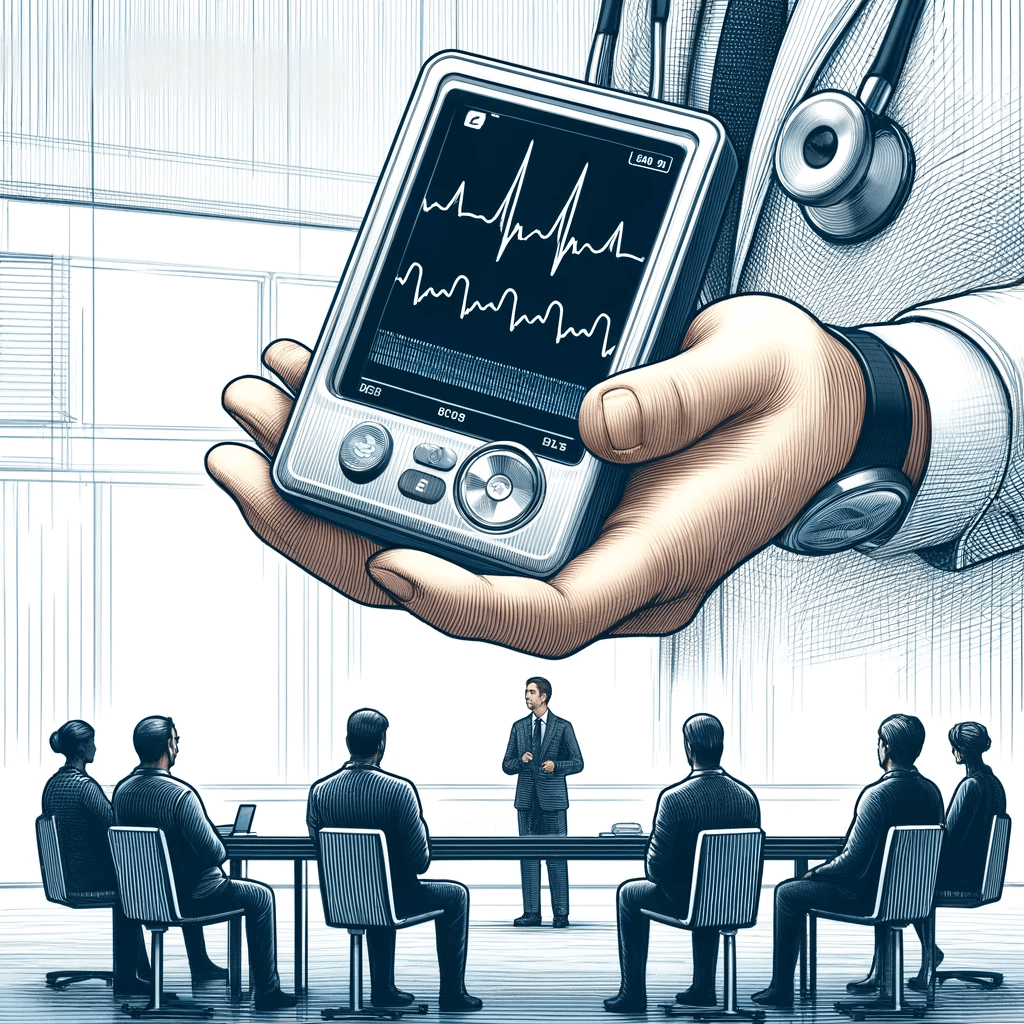
Presentation of proof of concept is also challenging!
I hope I made you aware of the importance of the prototyping process. If you have questions feel free to contact me!
Let's face it? It is a challenge to get top Qt QML developers on board. Help yourself and start the collaboration with Somco Software - real experts in Qt C++ framework.
Discover our capabilities
As systems grow more complex and reliability becomes mission-critical, developers face an old but still unsolved dilemma: should you build […]
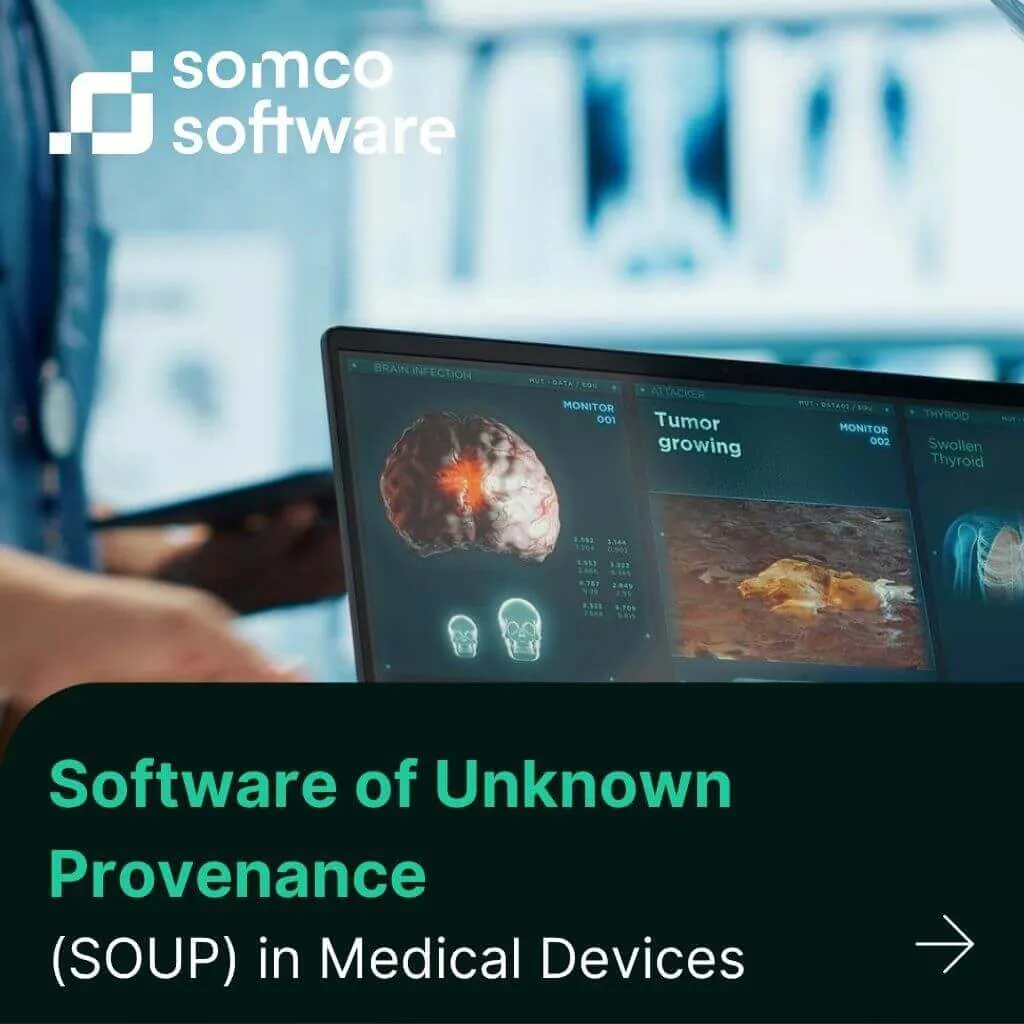
In the projects we deliver at Somco for medical device manufacturers, the topic of SOUP almost always comes up. Whether […]
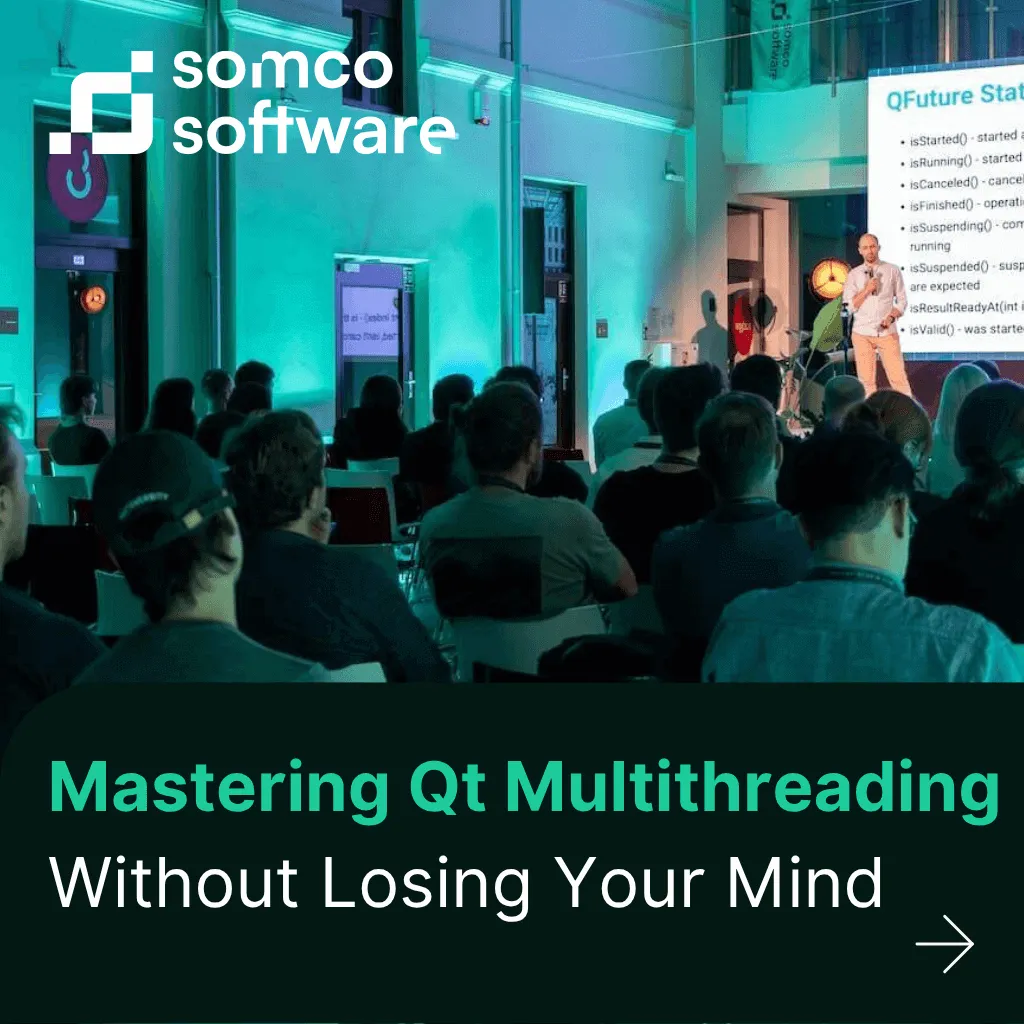
As applications get more complex and performance expectations rise, multithreading becomes essential. In my experience, Qt provides a powerful — […]